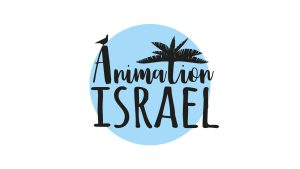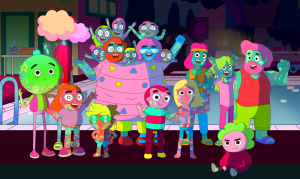The Israeli Animation Industry has had many incredible successful productions come to fruition, ‘Waltz with Bashir’, ‘The Muppets Babies’ series for Disney, and the ‘CocoMelon’ latest season for Netflix are but a few. But on the down side – we have had several productions simply crash and burn due to missing the financial incentives our industry needed. But this is about to change!
The Israeli Government has finally approved an initiative to rebate foreign investment in film and Animation. Something that has been going on for years in Europe and Canada – so in honor of this potentially ‘industry changing’ initiative let me share a little about what is going on in our gem of a corner, way over in the middle east.
A decade ago, before this opportunity even happened, it felt like those episodes on Star Trek where the team landed on a planet with a population which hasn’t yet discovered the capabilities of space travel – and until they discover it for themselves, the Star Trek crew weren’t allowed to engage them.
So first things first, sorry for nerding out here, but it’s the perfect example! We had to wait for years for our government to “discover” the potential of these incentives for themselves, or, in the words of Robin Williams, they had to “Wake up and smell the Hummus!”… What took them so long?!
After all, for years international investors from foreign countries have been looking for creative talent (which Israel has plenty of) and service work possibilities at lower costs than Europe (which Israel also has) but many times the possibility for a co-production fell because of Israel’s limited or nonexistent incentive programs.
So as Israel finally breaks the speed of light and warps into a new era for Israeli animation in the world market, for those of you who want to work with us, this is your chance to jump on the bandwagon, and enjoy the creativeness (and incentives!) we have to offer.
A Few Facts:
An average European animated feature costs 10-13 million Euro. But even today Israel’s feature funds can only support up to 300,000 Euros per project in total.
(Israel has several cultural funds, but there in most cases only one of them can support the same film)
Until today, this has always positioned the Israeli partner as a minority stake holder in the production, even on projects where the creative lead came from Israel.
That said, there were some unique cases where the different funds joined together to support a single project, but you can count those films on one hand – and even then, the maximum we could have raised from the funds was around a 1 million Euro.
For series productions, Israel doesn’t even have that unfortunately, and the only way to fund episodic content is with the local broadcasters (Hot, Yes, Kan, BabyTV, HOP!, Channel 8, etc )
But the situation is changing. As they say, Rome wasn’t built in a day, or Israel’s Animation Industry for that matter.
Let’s look at the international incentives in place today and how they compare to what Israel has to offer.
(This research has been provided by Animation Israel which is run by Anne-Marie Asner, one of the biggest Israeli lobbyists to support animation production in Israel, and has been trying for years to convince the different ministries to invest resources at international markets).

Ireland is a great example of how the local government believed in the potential of the Animation industry, and within 10 years has grown it to be one of the leading countries for animation production.
Its local ROI is 3.8x on every euro spent in animation.
It has grown its industry from 300+ to 1500+ creators within 5 years.
The UK is another wonderful example of how within 10 years, the country has grown its local investment from 35M to 475M just by rebating foreign investment. It has over 4x ROI on industry government spend.
If we look across the pond to the North American industry, the US is mostly based on independent / Studio budgets and a little north, Canada is very similar to the European system, with great government support – up to 30% rebates on the local workforce spend, in addition to regional funds in the different vicinities.
So if we compare this to what is happening in Israel, the local incentives should be worth your while:
- In 2014, The Jerusalem Film Fund (The JFF) run back then by Udi Ben-Dror and Yoram Honig aimed to create a local ecosystem for the creatives in their region. They invited established studios like Snowball, PitchiPoy and even us at The Hive to produce their productions in the Jerusalem region in order to hire local talent.Under new management, led by Eyal Benbenisty, their support currently offers between 20-50% rebates on local investment with a cap of $3mil per project.
This means that if you hire local ‘Jerusalemites’ you can get 50% back on your investment, and when you hire someone from anywhere else in Israel to come to work on your Jerusalem production, it will be 20%.Most recently The Hive serviced the first of its kind international episodic animation treaty co-production between Israel and Canada. A TV series called “Summer Memories”, produced by Aircraft Pictures, Yeti Creative from Canada, A&N from Israel and distributed by Wild Brain Canada. Independent Executive Producer Irene Weibel was also part of the team that brought together this experienced group of studios which provided the financing and structure to produce this series. This production is the first of hopefully many to lead the way to successful international relationships with The Hive.
This is great for the local studios, but the problem with this regional support is that it isn’t an overall solution. While there is funding incentives in place, the municipality of Jerusalem doesn’t have much to offer to the local creators to stay and live there, causing many graduates from the esteemed Bezalel School of Art and Design, Sam Spiegel Film and Television School and Musrara Art School to leave the city, the moment they finish school. The city life or the living costs in the capital aren’t worth staying, no matter how much work is offered in town.
And considering that Tel-Aviv aka “the city which never sleeps”, is just 40 mins away by car or train – why would they?As a producer who is endlessly seeking Jerusalem talent to get the 50% rebates for his co-production partners, this affects us as production companies who are trying to convince the international investors to come to us over countries like Spain, where the Canary Islands offer 40% back without the need to live there – you simply need to work on the islands during the production.So if you are planning on a production in Jerusalem, I would aim for an average of 30% depending on the workflow and talent involved.
- Most recently a new region in Israel has opened its doors to the international market supporting development funding, offering content developers to produce their own proof of concepts with local talent and funding (up to $40,000 per poc).
It’s called the ‘WNA’, West Negev Animation. It’s a joint venture supported by the local region in collaboration with The Hive Studio.
Their aim is to help creators (you don’t have to be a local creator) or potentially international studios to develop and test out their content by creating a POC and pitch bible and once its greenlit for production, to do some of the service work in the region.

I personally think its a great opportunity to have – as we know the earlier stages in development of a show are usually the hardest parts to fund – So here we have some regional interest who see this as a great way to invest in the local talent (mostly graduates from the Sapir College of Art) and potentially create work the local region with long-term productions.
I do know they are planning on putting tax incentives in place to lure the producers even more.
Fingers crossed they come through!
- Lastly, thanks to a recent breakthrough with the local government and convincing it to support potential incentives (Thanks to Animation Israel’s research and support and the Israeli Animation Guild which led the fight), animation has been added to the approved incentive rebates on foreign investments (LINK TO ARTICLE).
By combining the national and regional incentives, this has the potential to ‘Break the market’ if played correctly by local producers. They can get funding from the national government AND combine this incentive with the regional incentives to get funding from both entities.* You cannot use the cultural fund’s investment for the national incentives, but you can invest them and recieve the regional ones.
In summary, these incentives were put in play to jumpstart a non-existent industry that is just waiting to join the international market.
Israel has the creative capabilities, the manpower and now the rebates to become a valuable player.



